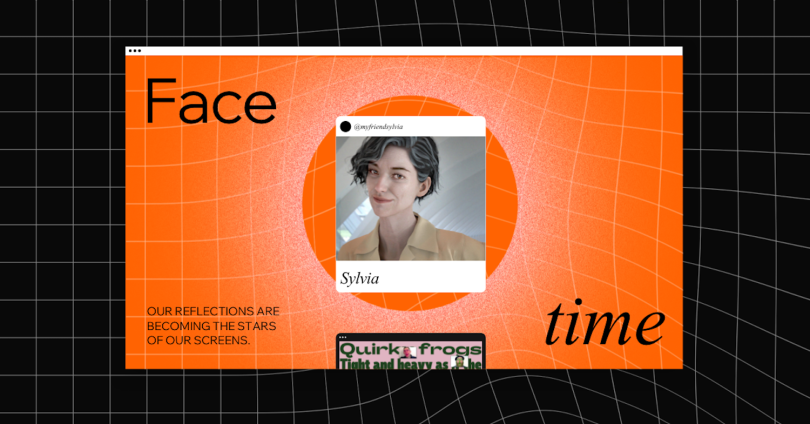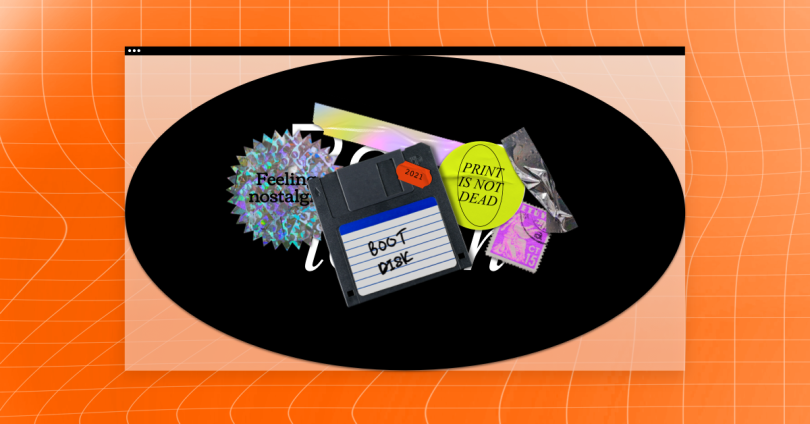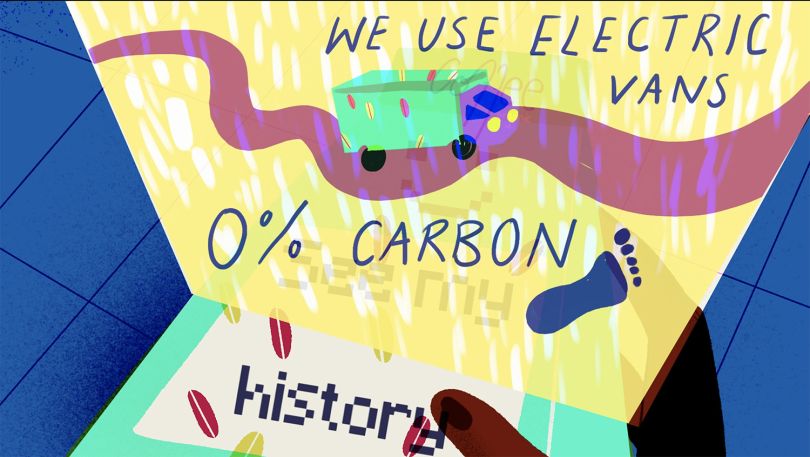Well, we made it. It’s 2021, and, if you’re reading this, you’ve endured a year of unimaginable disruption. Design has always played a role in shaping our vision of the future. But this year — with festivals and events canceled, companies shifting to remote work and retailers retooling their online presences in response to social distancing guidelines and occupancy restrictions — what that future might look like remained nearly impossible to predict.
Still, many UX and web designers used their skills to help restore a sense of hope and normalcy to our lives. We spoke with Jona Moore, global VP of technology at the design agency Frog, along with Lior Bash and Susan Kaplow, marketing leaders at the design platform Editor X, for a look at emerging design trends likely to dominate the year ahead.

The Web Will Feel More Like ‘Real Life’
With the loss of many familiar, real-life experiences throughout 2020, designers turned to immersive, 3D experiences to move beyond the monotony of rectangular Zoom grids.
As described in Editor X’s Web Design in 2021 report, the New York Times’ research and development team offers a view of how environmental photogrammetry — patching together tens or hundreds of photos into a 3D image — can reconstruct physical spaces to allow readers to experience them as though they were there.
At an artist couple’s loft in Providence, Rhode Island, stacks of books, cleverly hung paintings and a flag-draped table laid out with prints and monographs create the impression of a contemporary art installation. By clicking on points of interest in the room, readers can explore annotated visual artifacts, such as a Chinese cabinet with a dragon etched on its doors or an original oil painting of a Turkish bath.
Designers are steadily eroding the boundary between real and virtual worlds.
“From a storytelling perspective,” the editors noted, “this allows us to direct how a reader sees or moves through the area after we’ve captured it and creates endless possibilities for framing and guiding the story.”
The trend toward immersive virtual experiences was captured in other ways too, Bash, who is head of marketing at Editor X, told me. Set to the music of electronic musician Richie Hawtin, the Prada SS 2021 Fashion Show took place online, without a live audience. Chandelier-like arrays of video cameras captured the fashion models at the center of the show, which was viewable on a live feed or as a VR-rendered recreation.
The video game sets and human-like avatars of Travis Scott’s Fortnite concert “Astronomical” and the Tiger Street Food Virtual Festival also embody a trend likely to continue in 2021 — designers steadily eroding the boundary between real and virtual worlds.

Digital Facelifts Might Kill the Ego
Narcissus, the handsome hunter of Greek mythology, famously fell in love with his own reflection in a pool of water. It’s a myth that resonated in 2020, as many of us spent much of our time staring back at our own images on video calls.
Recognizing the potential to breathe new life into our self-images, designers created tools to transform our likenesses. Consider the work of Aaron Jabloski, a digital artist whose “Parabola” AR filter for Instagram recasts our faces inside an orbit of translucent masks. Or the high-gloss sheen of Johanna Jaskowska’s “Beauty3000” filter, which caught the attention of celebrities like Cardi B.
As end users increasingly become the focal point of online experiences, traditional notions of beauty — smooth, unblemished skin and perfectly symmetric features — appear to be giving way to something arguably less superficial.
“I think people are getting bored of seeking perfection,” Jablonski told Adobe. “It’s becoming increasingly important for many of us to embrace individualism and weirdness.”
Our Interfaces Will Become Even More Personalized
If you’ve seen your Spotify 2020 end-of-year use summary, you’ve experienced UI personalization at work. (Yes, it knows you’ve been listening to Mariah Carey again.) And you’re probably aware that the recommended movies on your Netflix account are generated by algorithms that track your viewing history and the habits of other viewers.
But did you know this: Even the cover art you see for individual Netflix titles is personalized?
“The artwork may highlight an actor that you recognize, capture an exciting moment like a car chase or contain a dramatic scene that conveys the essence of a movie or TV show,” write Ashok Chandrashekar, Fernando Amat, Justin Basilico and Tony Jebara on the Netflix tech blog. “This is yet another way Netflix differs from traditional media offerings: We don’t have one product, but over 100 million different products with one for each of our members with personalized recommendations and personalized visuals [emphasis theirs].”
“People get really excited when the platforms they use understand them. It can give them a window into their souls.”
On the flip side of UI personalization is the kind of customization offered to users through dark mode, vanishing texts, enlarged typography and tools like chat themes in instant messages, Bash said. Such features give users the power to reflect their personal tastes and make online experiences more accessible.
“People get really excited when the platforms they use understand them. It can give them a window into their souls,” Kaplow, who is head of content at Editor X, said. “Not only do they feel valued by a company and spend time on a site, but they have an opportunity for introspection.”
Infrastructure Upgrades Will Cater to Remote Workers
The breakdown of the boundaries between the home and office has led to a massive relocation of the tech workforce, Moore told me.
“The data we saw was from Redfin, where house prices, year over year in the month of July, were up 11.3 percent in rural areas,” she said, adding that the bump surpasses price increases in cities, which jumped 6.7 percent.
With “Zoom towns” cropping up in rural mountain villages, beach enclaves and communities like Bentonville, Arkansas, where Walmart is headquartered, tech firms may need to reevaluate their investment in digital infrastructure to recruit top talent. While video calls, digital whiteboards and three-dimensional modeling and visualization tools have made remote collaboration easier, Moore said, they are data intensive and may not be supported in rural areas.
Design teams will need to look beyond their core users to those whose needs are changing because of remote work, and also consider the needs of stakeholders involved in the supply and maintenance of broadband cellular networks.
“So if I was AT&T, I might partner with Cisco, or whomever, to see if they can offer packages for the employees who work in this area for better connectivity, infrastructure and bandwidth to power remote collaboration tools,” Moore said.

Blended Reality Will Transform Home Theaters and Cars
The streaming wars revealed, among other things, the extent to which home TVs have supplanted the silver screen as the go-to destination for cinema. But the home-viewing experience could, and likely will, be better in 2021, Moore told me. That’s because designers are getting savvier about enhancing movies and shows through blended reality — an umbrella term for integrated technology ecosystems that bring together elements such as 3D design, AR/VR, digital imaging and 3D fabrication.
“[Automakers are] looking into how you can start to see a trip in context, whether it starts in your phone or maybe goes into the vehicle itself in some sort of projection.”
Automakers are also on the cusp of the trend, developing volumetric digital overlays that could soon turn up the dial on the classic road trip.
“They’re looking into how you can start to see a trip in context, whether it starts in your phone or maybe goes into the vehicle itself in some sort of projection,” Moore said. ‘‘‘OK, here’s the Grand Canyon, and these are interesting facts about it.’ It’s a way to bring the digital and physical together.”
Meanwhile, several construction companies and manufacturers are prototyping the use of AR-powered equipment to improve on-site job safety.
“Clients are now asking us, ‘How can I layer on — whether it’s safety glasses or some other piece of equipment — information in context?’” Moore said. “Instead of touching an iPad or looking at a screen, workers can [receive guidance] in the context of their work.”

Nostalgia Will Be Cool Again
Microsoft’s recent call for “a sweeping rejuvenation of Windows,” as reported by the Verge, led some developers on Twitter to wonder if the long run of flat design is coming to an end. A nostalgic eye for the past is emerging in web designs that recall the tactile, flippable experience of print books, magazines and vinyl record album inserts, Bash told me.
Citing the magazine-like grids and heavy font of the Los Angeles-based online furniture store Waka Waka and Old English-style typography of the creative media space Miilkiina as two examples of a widespread trend, Bash said that a longing for touch brought on by the coronavirus pandemic has inspired the latest fascination with the design styles of past.
Health and Fitness Apps Will Be Funny
Peloton Interactive wasn’t the only big winner of 2020. From virtual home gyms like lululemon’s Mirror to Studio Something’s Feels FM, a jukebox powered by emojis, health and well-being software saw a breakout year.
“There’s a celebrated frivolity, if you will, that allows these experiences to be fun, joyful and have a sense of escapism to them.”
As screening data from Mental Health America revealed an increase in people seeking help for anxiety and depression, designers sought to lift spirits by adding a touch of levity to health and fitness apps. Animated icons, warm color palettes, cheeky copy and machine learning algorithms calibrated to adjust to users’ performance and fitness goals have reinvigorated a once-clinical design space.
“Health and mental health became a bigger part of our lives, and it got to the point where we couldn’t take it so seriously. There’s a celebrated frivolity, if you will, that allows these experiences to be fun, joyful and have a sense of escapism to them,” Kaplow said.
UI Friction Will Make Users Think — and Think Twice
As the popular Netflix documentary The Social Dilemma emphasized technology’s potential for manipulation and misuse to mainstream audiences, web and UX designers pushed back with digital tools intended to help users be more mindful of their online behavior.
Lillian Xiao, a UX designer for Volkswagen and Audi writing for Editor X’s Shaping Design blog, points to Apple’s Screen Time feature and Google’s Wellbeing tools as helpful options for users to monitor screen time and app use and minimize notifications. Grayscale — a colorless screen display, i.e. black and white — and services like Pocket, which lets users return to saved videos and articles they’re interested in but can’t read immediately, are other ways designers are attempting to make users feel calmer online, according to Xiao.
Meanwhile, other design teams are deliberately inserting friction into the user experience — a move once considered antithetical to software design — to encourage reflection on the part of users before they post something. OpenWeb, an organization that, according to its vision statement, aims to “take back the web from the trolls, from the bullies, from the bots,” works with publishers like AOL and Newsweek to moderate comment sections by sending polite nudges to users, discouraging them from submitting offensive remarks.
“Commenting platforms can be destructive tools because of the low quality of the conversation,” Kaplow explained. “[OpenWeb’s] platform only surfaces positive, productive conversation, which incentivizes users to participate by creating a safe environment, while holding commenters accountable for the comments they’re leaving.”

Corporate Values Will Dominate Brand Messaging
Nike’s rapid response to the killing of George Floyd — blacking out its homepage four days after the incident and airing a video with the tagline “For Once, Don’t Do It” in a direct repudiation of its mantra — is one of the year’s most striking examples of designers applying brand language and visual assets to project a company’s social values, Bash told me.
But other companies included in Editor X’s Web Design in 2021 report, such as Glossier, which pledged $500,000 in grants to support Black-owned beauty businesses, and Patagonia, which has an activism tab in its top-row navigation bar and openly proclaims on its website that it’s “in business to save our home planet,” are also becoming more overt in their expressions of corporate values.
“It’s astonishing how quickly Nike got the message out. Brands didn’t use to be so transparent in expressing their values.”
The trend, Bash told me, springs from the desire of younger customers to support companies not only because of their products, but because of how they use their power and influence to affect social change.
“It’s astonishing how quickly Nike got the message out,” Bash said. “Brands didn’t use to be so transparent in expressing their values. Now, justice is becoming a thing [companies] follow and stand behind and want to promote.”
Soft Color Gradients and Outdoor Scenes Will Convey Hope for the Future
Of all the design trends that emerged in 2020, the one that may gain the most traction in the year ahead is the use of softly hued colors, open landscapes and ethereal color palettes to present a vision of a more optimistic future. Consider the hopeful blue skies on the banner of fashion brand Opening Ceremonies or the warm pastel tones and bubbly cloud forms on the website of beverage brand Recess, which bills itself as an “antidote to modern times.”
“It’s a reaction to the year,” Kaplow said. “Everything has been so dismal. Hopeful colors, sunny skies and rainbows are some of the classic ways we see brands epitomizing hopefulness in their visual narratives. It’s a sort of Teletubbies aesthetic on things that were once dry and boring.”




